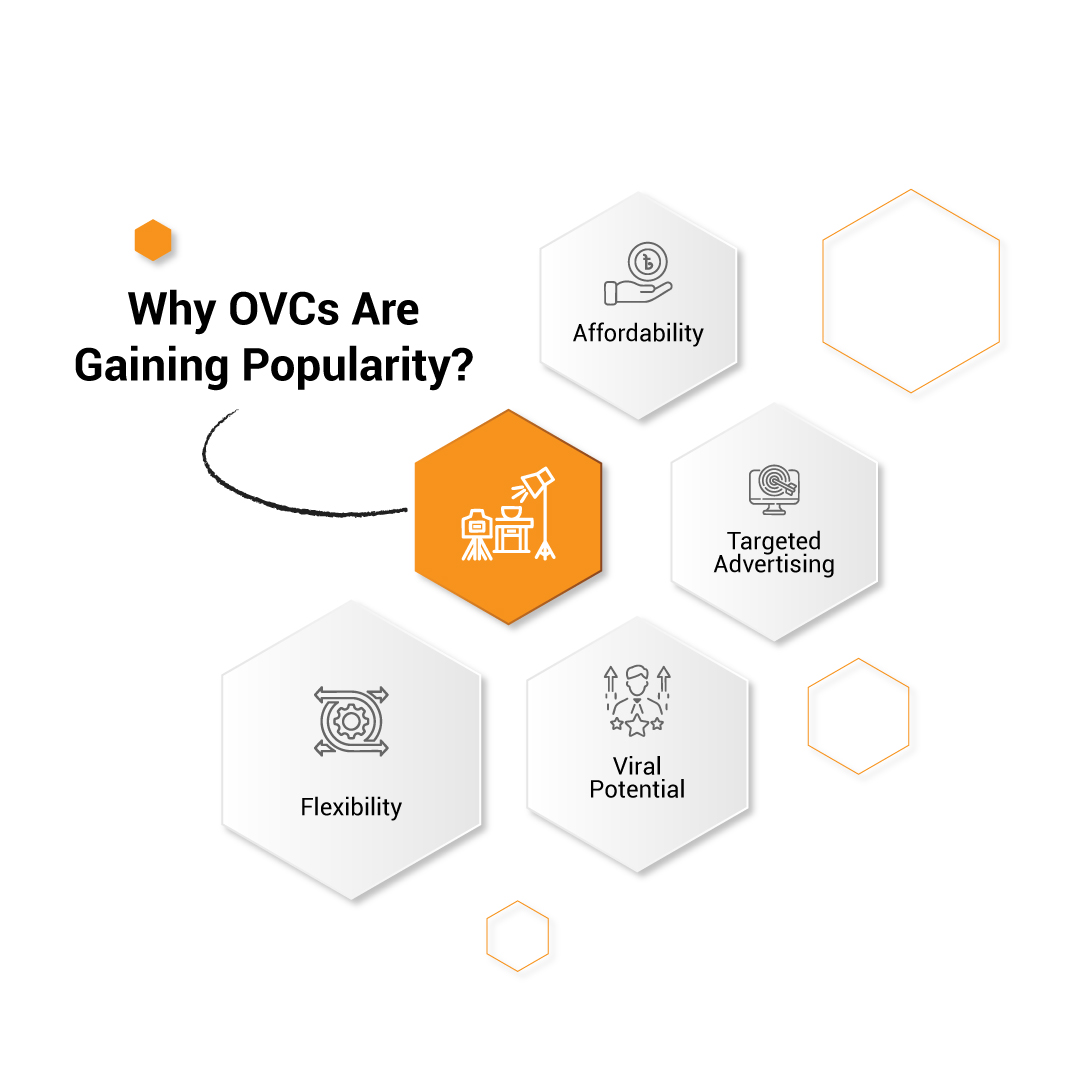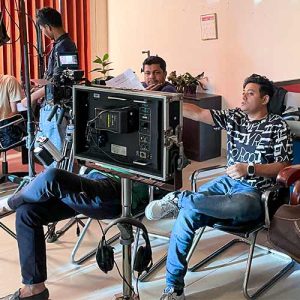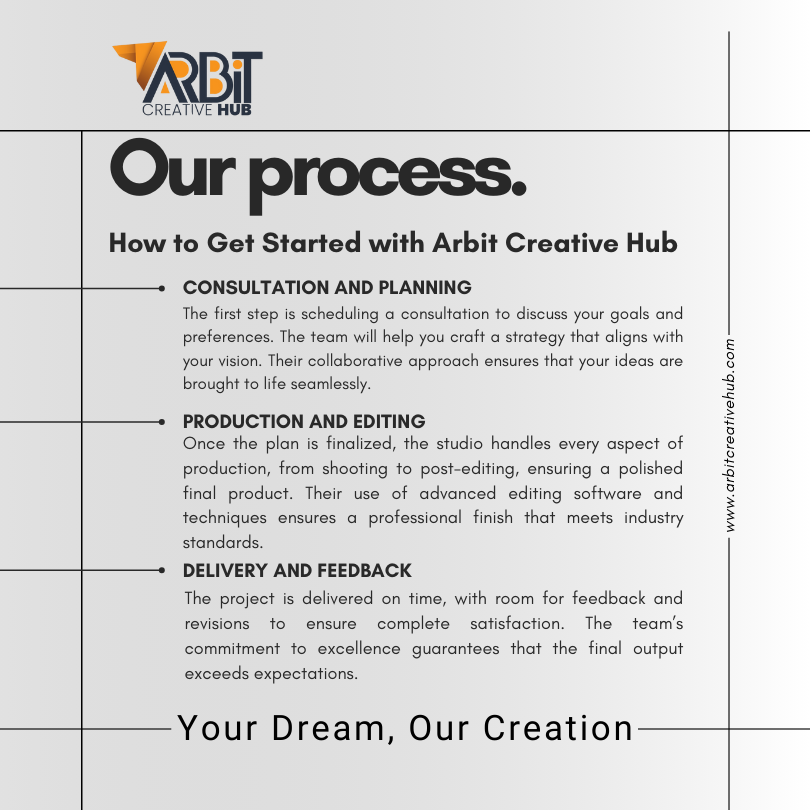Video content has become an essential part of modern marketing. Whether it’s a powerful 30-second message aired during prime time or a short reel that goes viral on Instagram, videos have the ability to engage, inform, and persuade audiences like no other medium. But not all videos are created equal, and understanding the difference between OVC (Online Video Content) and TVC (Television Commercials) is crucial for businesses looking to make an impact.
At Arbit Creative Hub, we specialize in crafting innovative video campaigns that speak directly to your audience, whether they’re watching on their phones or their TVs. This blog will guide you through the key differences between OVC and TVC, how audience behaviors have evolved, and how Arbit Creative Hub can help your brand leverage the best of both worlds.
OVC vs TVC in Bangladesh: A Comprehensive Analysis
The advertising landscape in Bangladesh is evolving rapidly. With the rise of digital platforms, brands are now exploring new ways to connect with their target audiences. Two prominent formats that dominate the advertising space are OVC (Online Video Commercial) and TVC (Television Commercial). While both have their strengths, choosing the right format for your brand requires a deep understanding of their impact, cost, and reach.
What is OVC (Online Video Content)?
Definition and Examples of OVC
OVC, or Online Video Content, refers to videos specifically designed for online platforms like YouTube, Facebook, TikTok, and Instagram. These videos are often shorter in length (ranging from a few seconds to a couple of minutes) and tailored to the preferences of specific online audiences.
Examples include:
- A 30-second Instagram Story promoting a product.
- A how-to video on YouTube showcasing your expertise.
- A fun, dance-filled TikTok that introduces a new brand campaign.
Key Features of OVC
- Platform-Specific: OVC content is optimized for the platform it’s created for, whether it’s a vertical format for Instagram Stories or hashtag-driven content for TikTok.
- Short-Form: Since attention spans are shorter online, OVC is designed to grab attention immediately and deliver its message quickly.
- Interactive: OVC allows for real engagement—likes, shares, comments, and reactions provide measurable feedback for brands.
What is TVC (Television Commercial)?
Definition and Examples of TVC


TVC, or Television Commercials, are the more traditional form of video advertising, designed for broadcast on network or cable TV. These commercials rely on larger-than-life storytelling and widespread reach to appeal to a broad audience.
Examples include:
- A luxury car commercial aired during the Super Bowl.
- An emotional detergent ad targeting families during daytime TV.
- An elegant scripted campaign highlighting luxury brands.
Key Features of TVC
- Broadcast-Focused: TVCs are designed to reach wide audiences during specific time slots and programming.
- High-Budget: Typically, TVCs demand significant investment in production and airtime.
- Broad Appeal: They are often created to resonate with a general audience, rather than targeting niche groups.
The Evolution of Audience Preferences
From Passive Viewers to Active Consumers
Gone are the days when TV was the dominant medium for entertainment and advertising. Audiences today are more active in their consumption habits, engaging with content on mobile devices, social media, and streaming platforms.
- Traditional TVC Consumption: TV audiences typically consume content passively, often during specific viewing times.
- Modern OVC Engagement: Online video viewers interact with content by leaving comments, tagging friends, and even creating their own user-generated versions.
This shift has pushed brands to think beyond the “one-size-fits-all” model of traditional TV advertising and focus more on engagement-driven strategies.
Platform Differences: Where OVC and TVC Thrive
Each format thrives in different environments, and choosing the right platform depends on your goals.
- TVC Dominance: Television remains a powerful platform for maintaining a premium brand image, reaching older demographics, and positioning products in household settings.
- OVC Popularity: Platforms like YouTube, Instagram, and TikTok are ideal for targeting younger, engaged audiences who consume content on-the-go.
Cost Comparison: TVC vs OVC
One of the key differences between TVC and OVC lies in the costs associated with each format.
TVC Costs
- High Production Costs: TVCs require professional production crews, actors, and high-quality post-production work.
- Airing Costs: You’ll need to pay for airtime, which varies based on time slots and popular shows.
OVC Costs
- Scalability: OVC campaigns can be tailored to fit any budget.
- Budget Flexibility: With options like smartphone-shot videos and quick edits, OVC lets brands produce impactful content without breaking the bank.
Engagement Levels: Interactive vs Passive
TVC Engagement
TVCs offer a one-way communication format. Audiences see the ad but have limited means of providing instant feedback. While these commercials can leave lasting impressions, they lack the interaction that drives modern consumer behavior.
OVC Engagement
OVC fosters real-time interaction, thanks to features like likes, comments, shares, and tags. This allows brands to engage directly with their audience and build stronger relationships.
Analytics and ROI: Measuring Success
TVC Analytics
Measuring the success of a TVC is often challenging. While you can monitor viewership data and brand recognition studies, tracking direct ROI is complex and indirect.
OVC Analytics
With OVC, brands benefit from real-time data. Metrics like views, click-through rates, engagement rates, and conversions offer immediate insights into a campaign’s performance, enabling businesses to optimize their strategies quickly.
The Rise of OVC in Bangladesh’s Digital Landscape
Bangladesh is witnessing an explosion in internet usage, with over 130 million mobile internet subscribers. This rapid digital transformation has paved the way for OVCs to become a dominant advertising medium.

Why TVC Still Holds Power in Bangladesh’s Advertising Market
Despite the rise of digital media, TVCs remain a critical part of advertising strategies for many Bangladeshi brands.
Strengths of TVCs:
- Massive Reach: Television remains a primary source of entertainment in many Bangladeshi households, especially in rural areas.
- Credibility: TVCs are perceived as more trustworthy, particularly for established brands.
- Memorability: Iconic TVCs often leave a lasting impression on audiences.
Creative Freedom in OVC vs TVC
TVC Styles (Television Commercials)
TVCs are a traditional form of advertising that prioritize a high production value and a well-thought-out narrative. This style is ideal for brands that aim to build trust, credibility, and prestige in the market.
Key Characteristics:
- Polished Presentation: TVCs are visually sleek and often involve professional-grade equipment, meticulous lighting, and detailed editing to deliver a flawless output.
- Scripted Approach: They are carefully scripted, often involving professional writers and directors, to ensure every second of airtime effectively communicates the intended message.
- Storytelling Focus: TVCs often tell a cohesive story, incorporating emotional elements, persuasive copy, or a strong call to action.
- Targeted Messaging: Because of high media costs, every TVC is designed to resonate with a broad audience within its targeted demographic.
- Brand Reputation: Perfect for established or premium brands, TVCs convey reliability, luxury, and professionalism, aligning with the brand’s image.
Examples of Use Cases:
- Launching a new luxury product line.
- Communicating a brand’s legacy or heritage (e.g., decades in the industry).
- Highlighting emotional or memorable moments during festive campaigns.
OVC Styles (Online Video Content)
OVCs thrive in the dynamic digital landscape, where creativity, relatability, and adaptability are key. These videos are designed for quick consumption and are often optimized for social media platforms like Instagram, YouTube, and TikTok.
Key Characteristics:
- Experimental Formats: Online videos allow for diverse styles—short-form reels, interactive videos, split-screen storytelling, or animated infographics.
- Trending & Reactive: OVCs can tap into trending topics, memes, or social media challenges to connect with audiences in real-time.
- Raw and Authentic: Audiences respond well to unpolished, behind-the-scenes footage, personal testimonials, or content that feels relatable and human.
- Cost-Effective & Fast: OVCs can be produced quickly and affordably, making it easy to test and refine different approaches.
- Platform-Specific: Videos are often optimized for specific platforms, leveraging vertical formats, captions, or hashtags to increase visibility and engagement.
Examples of Use Cases:
- Promoting a flash sale or limited-time offer with trending music.
- Sharing a behind-the-scenes glimpse of your team or production process.
- Leveraging a viral trend to showcase a product in a fun, relatable way.
Key Distinction
While TVCs aim for longevity and prestige, OVCs thrive on agility and immediacy, allowing brands to be part of everyday online conversations. Brands may choose one over the other or integrate both styles into a cohesive campaign to cater to different audience segments and marketing goals.
Let me know if you’d like additional examples or further refinements!
Arbit Creative Hub’s Role in Bridging the Gap
At Arbit Creative Hub, we combine the refined storytelling of TVCs with the adaptable creativity of OVC. Here’s how we do it:
- We craft campaigns that fit the demands of specific platforms while maintaining brand consistency.
- We tailor storytelling to resonate with your audience across a variety of channels.
Success Stories from Arbit Creative Hub
1. A TVC Campaign That Delivered Results
We worked with a luxury home appliance brand to deliver a high-budget TVC that captured the hearts of home-makers. The campaign successfully boosted brand awareness by 35%.
2. OVC That Went Viral
A short, witty Instagram reel for a beverage brand garnered over 1 million views within days, driving a 25% increase in online sales.
3. Hybrid Approach
Our work for a fitness brand highlighted the power of combining TVC and OVC. The campaign’s message aired on TV, with engaging snippets shared on YouTube and TikTok, resulting in cross-platform success.
The Future of Video Content with Arbit Creative Hub
Predictions for OVC
Online videos will continue to dominate, with increasing demand for personalized, engaging, and trend-driven content.
Evolution of TVC
Television commercials are adapting by integrating interactive elements and driving traffic to online platforms.
Why Partner with Arbit Creative Hub
By blending creativity and strategy, Arbit Creative Hub ensures your brand stays ahead in the competitive landscape of video marketing.


Which Format is Right for Your Brand?
Both OVC and TVC have their merits. Choosing the right format depends on your goals, audience, and budget. At Arbit Creative Hub, we specialize in creating impactful video campaigns tailored to your unique needs. Whether you’re looking to build awareness through a polished TVC or drive engagement with dynamic OVC, we’ve got you covered.
In the battle of OVC vs TVC, there’s no one-size-fits-all answer. The right choice depends on your brand’s goals, audience, and budget. With Bangladesh’s rapidly changing media landscape, brands must stay agile and embrace the format that best aligns with their objectives.
At Arbit Creative Hub, we’re here to guide you through the process and ensure your campaigns make a lasting impact. Whether it’s a viral OVC or a memorable TVC, let us help you tell your story.
How to Get Started with Arbit Creative Hub

Want to create a winning video marketing strategy? Contact Arbit Creative Hub today to start your next great campaign.
Stay connected with Arbit Creative Hub and keep up with the latest in advertising trends and innovations. Follow, like and engage with us on our social media platforms:
